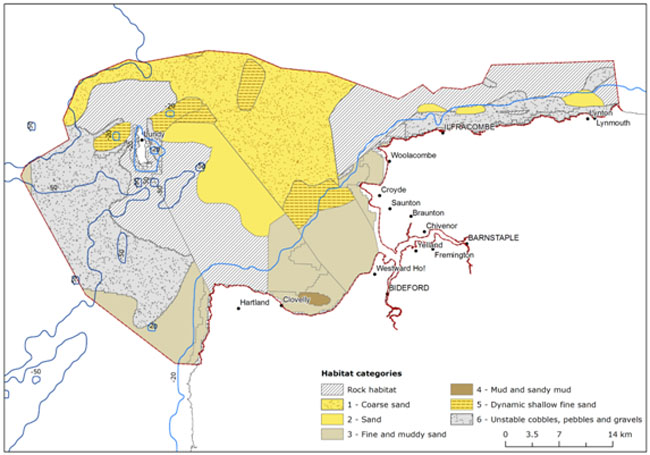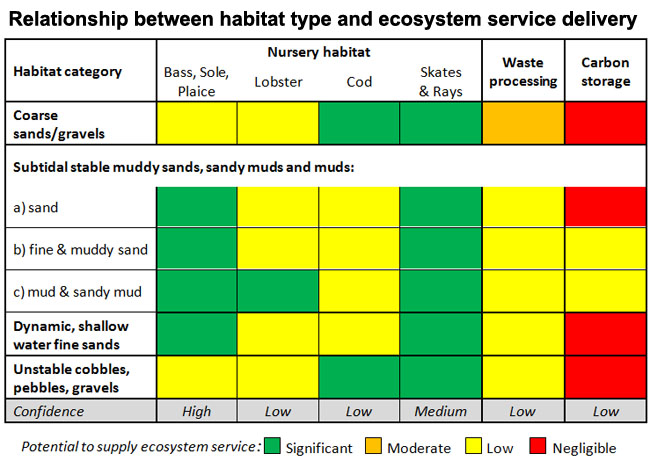5.1.5 North Devon: Ecosystem Services Assessment method and key results

Habitats across the site were mapped, using recent and historic research as well as modelled maps, and amalgamated into six habitat classes with similar characteristics.
Different methods were used to determine the level of services provided by each habitat class:
- Nursery provision: a literature review determined the preferences of juveniles for sediment type and water depth;
- Waste processing: considered bioturbation (how much the species present rework the sediment, and hence the potential for waste to be oxygenated, buried and otherwise neutralised) using empirical data;
- Carbon storage: was based on sediment mud content.
 Figure: Broad habitat types classified according to fishing pressure sensitivity and ecosystem service contribution.
Figure: Broad habitat types classified according to fishing pressure sensitivity and ecosystem service contribution.
This produced a matrix (following table) linking habitat types to ecosystem service, using qualitative indicators.

It demonstrated that carbon storage was generally negligible due to the absence of vegetated habitats, and waste processing was mostly low, with the presence of large bivalves in coarse sediments key to the delivery of this service. Nursery habitat provision was significant for at least one key species for each of the habitats.
A confidence assessment was included, depending on the quality and quantity of the evidence available.
An example map of potential service delivery based on the relationship between habitat type and ecosystem service delivery (but not considering the current pattern of pressures that might reduce the provision of ecosystem services) is given in §section 5.1.6.4 Scenario phase 4).

